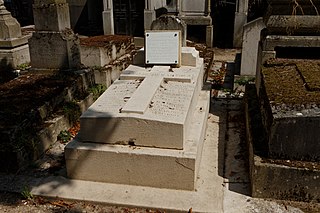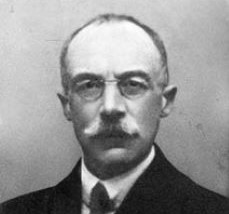Related Research Articles

Khasekhemre Neferhotep I was an Egyptian pharaoh of the mid Thirteenth Dynasty ruling in the second half of the 18th century BC during a time referred to as the late Middle Kingdom or early Second Intermediate Period, depending on the scholar. One of the best attested rulers of the 13th Dynasty, Neferhotep I reigned for 11 years.

The Institut français d'archéologie orientale, also known as the French Institute for Oriental Archaeology in Cairo, is a French research institute based in Cairo, Egypt, dedicated to the study of the archaeology, history and languages of the various periods of Egypt's civilisation.

The Bulletin de l'Institut Français d'Archéologie Orientale or BIFAO is a scientific journal containing scholarly articles pertaining to the study of Egyptology. Articles cover a range of disciplines, including history, art history, archaeology, philology and religion, from the Prehistoric period to the end of the Byzantine Period in Egypt. Although primarily a French publication, articles written in English and German are also accepted.

Georges Albert Legrain was a French Egyptologist.
Khamerernebty I was an ancient Egyptian queen of the 4th dynasty. She was probably a wife of King Khafre and the mother of King Menkaure and Queen Khamerernebty II. It is possible that she was a daughter of Khufu, based on the fact that inscriptions identify her as a King's daughter.
Khamerernebty II was an ancient Egyptian queen of the 4th Dynasty. She was a daughter of Pharaoh Khafre and Queen Khamerernebty I. She married her brother Menkaure and she was the mother of Prince Khuenre.
The Societé Royale de Papyrologie, founded in 1930 in Cairo and placed under the protection of King Fouad 7 May 1930, is a library of Egyptian papyrus scrolls and fragments and papyrological studies. Under its former names, Société royale égyptienne de papyrologie (1932–36) and Société Fouad premier de papyrologie (1939–46) it has published its papyrological papers, Études de Papyrologie, which first appeared in 1932 under the editorship of Pierre Jouguet at Cairo's Institut Français d'Archéologie Orientale, with a break during World War II, that recommenced in 1950.
Georges Goyon (1905–1996) was a French-Egyptian Egyptologist, a senior fellow at the National Centre for Scientific Research, and King Farouk's private archaeologist.
Nebsemi was an ancient Egyptian queen consort, a wife of Pharaoh Thutmose III of the 18th Dynasty.

Sobekemsaf(sbk-m-z3=f) was an ancient Egyptian queen of the 17th Dynasty. She was the wife of pharaoh Nubkheperre Intef and sister of an unidentified pharaoh, probably Sekhemre-Heruhirmaat Intef, Sobekemsaf II or Senakhtenre Ahmose.

Mersekhemre Ined was a pharaoh of the late 13th Dynasty, possibly the thirty-fifth king of this dynasty. As such he would have reigned from Memphis over Middle and Upper Egypt for a short time either during the early or mid-17th century, from 1672 until 1669 BC or from 1651 until 1648 BC. He may be the same king as Mersekhemre Neferhotep II.

Menwadjre Sihathor was an ephemeral ruler of the 13th Dynasty during the late Middle Kingdom. Sihathor may never have enjoyed an independent reign, possibly only ruling for a few months as a coregent with his brother Neferhotep I.

Pierre Jouguet was a French Egyptologist and classical philologist. In 1890 he studied at the École Normale Supérieure in Paris, obtaining his agrégation for grammar in 1893. For three years thereafter he was associated with the École française d’Athènes, followed by work at the Institut Français d'Archéologie Orientale in Cairo (1896–97). From 1898 to 1910, he was a lecturer of grammar and philology at the Faculty of Arts in Lille. On 8 June 1911 he received his doctorate of letters at the Sorbonne, subsequently serving as a professor of ancient history and papyrology in Lille. From 1920 to 1933, he was a professor of papyrology at the Sorbonne, meanwhile serving as director of the Institut Français d'Archéologie Orientale (1928-1940). From 1937 to 1949, he was a professor at Fouad I University in Cairo.

Edmond Maximilien Berthout van Berchem commonly known as Max van Berchem, was a Swiss philologist, epigraphist and historian. Best known as the founder of Arabic epigraphy in the Western world, he was the mastermind of the Corpus Inscriptionum Arabicarum, an international collaboration among eminent scholars to collect and publish Arabic inscriptions from the Middle East.
Paule Violette Posener-Kriéger was a French Egyptologist who was director of the Institut français d'archéologie orientale from 1981 to 1989. While in Abusir, she excavated the pyramid complex of Neferefre where she discovered the Abusir Papyri, a significant ensemble of documents dating to the later Fifth Dynasty of Egypt which she translated, a pioneering work for which she is best known. While in Abusir, she also unearthed several statues of the pharaoh Neferefre, among the best examples of royal statuary of the Fifth Dynasty.
Bernard Mathieu is a French Egyptologist who was director of the Institut français d'archéologie orientale from 1999 to 2005.
Paul Bucher was a 20th-century French egyptologist.
Hélène Cuvigny, Directeur de recherche au CNRS, is a French papyrologist, specialist of the eastern Egyptian desert in Roman times.
Gaston Wiet was a 20th-century French orientalist.
The pyramid of Neferkare Neby was the tomb of the Ancient Egyptian King Neferkare Neby, who reigned in the 8th Dynasty. It has never been located and is only known from an inscription.
References
- ↑ A. Gasse V. Rondot: Les inscriptions de Séhel (=Mémoires de l’Institut français d’Archéologie Orientale du Caire 126). Cairo: Institut français d’archéologie orientale. ISBN 9782724704341, pp. 92-93, SEH 162.
- ↑ Senebsen on Persons and Names of the Middle Kingdom